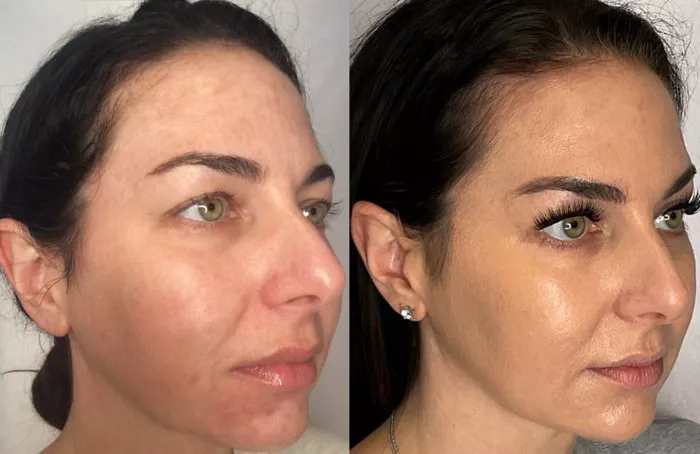A facelift, also known as rhytidectomy, is a surgical procedure designed to address signs of aging in the face and neck. It is a popular cosmetic surgery option for individuals seeking to restore a more youthful appearance. While facelifts can yield impressive results, it is important to understand the potential risks and complications associated with the procedure. In this article, we will discuss the risks of having a facelift to ensure individuals considering this surgery are well-informed and prepared.
General Risks of Surgery
Like any surgical procedure, facelifts carry inherent risks associated with anesthesia, bleeding, infection, and scarring. However, with advancements in surgical techniques, improved safety measures, and the expertise of qualified surgeons, the overall risk of serious complications is relatively low. Nonetheless, it is important to be aware of the potential risks involved in facelift surgery.
Specific Risks of Facelift Surgery
-
Anesthesia Risks
Facelift surgery is performed under general anesthesia, which carries certain risks. While complications related to anesthesia are relatively rare, they can include adverse reactions, breathing difficulties, allergic reactions, and in very rare cases, even death. An experienced anesthesiologist will carefully monitor you throughout the procedure to minimize these risks.
-
Bleeding
Bleeding is a potential risk during and after surgery. While your surgeon will take precautions to minimize bleeding during the procedure, excessive bleeding can occur in rare cases. It may require additional intervention, such as a blood transfusion or surgical intervention to control the bleeding.
-
Infection
Infections can occur after any surgical procedure, including facelifts. Your surgeon will provide you with detailed instructions on how to care for your incisions and minimize the risk of infection. However, if an infection does occur, it may require antibiotics or additional treatment to resolve.
-
Poor Wound Healing
In some cases, incisions may heal poorly, resulting in visible scars or delayed wound healing. Factors such as smoking, diabetes, and certain medical conditions can increase the risk of poor wound healing. Following your surgeon’s instructions for wound care and leading a healthy lifestyle can help reduce this risk.
-
Nerve Damage
Nerve damage is a potential risk of facelift surgery, although it is relatively uncommon. Temporary numbness, tingling, or altered sensation in the face and neck area are common after a facelift and typically resolve over time. However, in rare cases, permanent nerve damage can occur, leading to persistent numbness or muscle weakness.
-
Hematoma
A hematoma is a collection of blood under the skin that can occur after surgery. It can lead to swelling, pain, and a firm, bruised appearance. If a hematoma develops, it may need to be drained surgically to alleviate discomfort and promote proper healing.
-
Scarring
While efforts are made to minimize scarring and place incisions discreetly, scarring is an inevitable part of any surgical procedure. Most facelift scars are well-hidden within the natural creases and contours of the face and should fade over time. However, individual healing and scar formation can vary, and some patients may have more visible scars.
-
Hairline Changes
In rare cases, the hairline near the incision site may be altered due to the repositioning of the skin and underlying tissues during the facelift. Your surgeon will discuss this risk with you before the procedure and take precautions to minimize any noticeable changes to the hairline.
-
Asymmetry
Achieving perfect symmetry is challenging in any surgical procedure, and facelifts are no exception. While efforts are made to create balanced results, slight asymmetry in facial features or skin tension may occur. In most cases, any asymmetry is minimal and not noticeable to others.
-
Unsatisfactory Results
Despite careful planning and execution, it is important to recognize that the outcome of a facelift may not meet your expectations. It is crucial to have realistic expectations and to discuss your desired outcome with your surgeon before the surgery. Understanding the limitations of the procedure can help manage expectations and minimize disappointment.
Minimizing Risks and Ensuring Safety
While the risks associated with facelift surgery are relatively low, there are steps you can take to minimize these risks and ensure a safe and successful procedure:
- Choose a Qualified Surgeon: Research and select a board-certified plastic surgeon with extensive experience and a proven track record in performing facelift surgeries. A skilled surgeon will prioritize patient safety and take appropriate measures to minimize risks.
- Follow Pre- and Postoperative Instructions: Adhere to all pre- and postoperative instructions provided by your surgeon. This includes avoiding certain medications, quitting smoking, and following proper wound care protocols.
- Communicate Openly: Maintain open and honest communication with your surgeon. Discuss your medical history, any preexisting conditions, and your expectations for the surgery. Your surgeon needs a comprehensive understanding of your health to provide personalized care and minimize risks.
- Maintain a Healthy Lifestyle: Leading a healthy lifestyle can significantly contribute to a successful facelift surgery and minimize complications. Eat a balanced diet, exercise regularly, avoid smoking and excessive alcohol consumption, and manage any underlying medical conditions.
- Attend Follow-up Appointments: Attend all scheduled follow-up appointments with your surgeon to ensure proper healing and address any concerns or complications promptly.
Conclusion
While facelift surgery can provide remarkable results in reversing signs of aging, it is important to be aware of the potential risks and complications associated with the procedure. The overall risks of serious complications are relatively low, but it is crucial to understand that no surgery is without risks. By choosing a qualified surgeon, following pre- and postoperative instructions, maintaining a healthy lifestyle, and communicating openly with your surgeon, you can minimize risks and increase the likelihood of a safe and successful facelift surgery.

